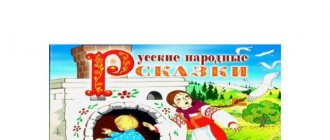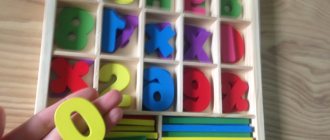Other types of literary leisure
Literary leisure evenings in the second junior group include various types of children’s activities:
- Reading, communication, stories,
- Singing and dancing numbers, staging performances,
- Listening, the process of learning by ear,
- Viewing, staging.
Children's folklore in a preschool educational institution in Korolev
During household holidays, a birthday or an evening of entertainment, children can perform a retelling of a prose work. You can invite a group of children to retell it in parts. What is a plus in this practice is that preschoolers learn to understand prose and tell it. Prose is heard very rarely in kindergartens during holidays.
In the preparatory group, the most appropriate options for literary leisure will be:
- Matinee,
- Amateur literary concert.
Matinee is one of the most favorite entertainments for kids. Most of all they like to spend it devoting it to their favorite fairy tales or writer. Topics can be anything:
- Russian folk tales,
- Children's poems by poets,
- Fairy tales from foreign countries.
Older children (6-7 years old) can organize concerts on their own for younger students. At the same time, it is best if they try themselves as presenters and organizers of such a responsible event:
- They will create the program themselves.
- Roles will be assigned
- Rehearsals will be held
- And they will prepare the room.
The first concert of this type is held for no more than 10-15 minutes.
The most spectacular entertainment options will be:
- Dressing up performances
- Theatrical performances,
- Concerts with the participation of parents, schoolchildren or older groups of children,
- Watching thematic programs on literary arts on television.
Interest in Russian folk tales increases significantly during presentations, quizzes and other types of exciting leisure time. Preschoolers learn good manners from the characters, learn their stories and try on their images.
Fairy tales for quizzes
The most striking and popular fairy tales for quizzes are:
- “Thumbelina” G.Kh. Andersen,
- "Pinocchio" by A. Tolstoy,
- “Little Red Riding Hood” and “Cinderella” by C. Perrault,
- “Moidodyr” by K. Chukovsky,
- "Snow White" by the Brothers Grimm,
- “Aibolit” by K. Chukovsky,
- “Puss in Boots” by C. Perrault,
- “Mustachioed and Striped” by S. Marshak,
- “Turnip”, “Three Little Pigs”, “Kolobok”, “Teremok”.
Conducting a quiz in the junior group of preschool educational institutions
Additional Information. An interesting version of the game would be for children to guess the name of the fairy tale, and for parents to guess the author of the work. This will help all participants actively participate in the process of the literary evening, creating vivid emotions and impressions.
Joint creativity of parents and children: ideas for educational crafts
Fairy tale quizzes
Quiz on fairy tales in kindergartens:
- Summarize children's knowledge about fairy tales,
- Develops friendliness and the ability to be united,
- Activate creativity
- Create a positive emotional mood,
- Form a personal position of perception of a fairy tale.
Important! A quiz on fairy tales in the preparatory group of the kindergarten “Visiting a Fairy Tale” involves preliminary work in the form of listening to audio recordings, conversations on the content, and looking at illustrations. The following equipment is used for fairy tale quizzes in the preparatory group:
The following equipment is used for fairy tale quizzes in the preparatory group:
- Prepared presentation,
- Cut-out pictures depicting fairy tale characters,
- Audio recordings with the voices of the characters,
- Visual material with tasks,
- Tokens.
Literary quiz in the senior group
The quiz for the senior group “Our favorite fairy tales” involves dividing the group into 2 teams: “suns” and “sparrows”. There is a fair jury at the quiz. The event begins with a warm-up, during which children answer questions. Then follows a second competition, where a fairy tale is read out, and the children must say what kind of work it is. Afterwards, riddles and physical education are used.
Drawing “Icicles are crying” - spring theme for younger groups
Lesson structure and plan
The structure of the lesson includes:
- Traditional forms of holding (matinees, evenings, concerts, quizzes, living rooms).
- Literary games (lotto, “zigzag of luck”, “tic-tac-toe”).
- Fairs (competitions, meetings with poets, journalists), amateur performances.
- An auction is a game according to the rules of the auction; the winnings go to those who give the correct answer to the question asked.
- A game-trip to the poet’s house-museum, to the places where the action is taking place, to the writer’s homeland.
- Non-traditional forms of presentation: flashbook, information digest, literary kaleidoscope, “storysec” (“bag of stories”), “magic backpack”, book fashion show.
Note! The classes develop skills of determination, perseverance, and a sense of cohesion. This evokes an emotional response and a feeling of joy in the child
After leisure time, preschoolers enrich their active gaming experience, strengthen their skills of safe behavior in games, and develop a sense of rhythm through exercises accompanied by music.
Leisure plan:
- The theme of the evening is determined. Goals, tasks.
- Introduction.
- An evening is held by combining different types of arts (music, visual arts, fiction). This could be a concert, a quiz, character performances, songs.
- During the event there are elements of physical and intelligent activity: dancing, listening, dancing, completing tasks, guessing riddles.
- Surprises are not forgotten: you can make a wish come true with the help of a seven-colored flower, ask your parents to read a poem by A.S. Pushkin, or watch a puppet theater.
Quiz questions
Literary quiz questions in a senior group on fairy tales can be:
- Puzzles,
- "Continue the poem..."
- Pictures with images of heroes, and the child answers who it is.
Examples:
He brought it to the forest and left it under the tree,
Not in spring and not in autumn, but in fierce winter!
Warm tears freeze in the cold,
Nastenka was saved by the real... (Morozko).
Children are given cards, 3-5 identical for several children. They depict: Serpent-Gorynych, Koschey the Immortal, Geese-swans, Alyonushka's sister, Little Humpbacked Horse. It is advisable to sign these cards. Then the teacher asks characterization questions to the characters. For example, who breathes fire when they're really angry? What birds stole children for Baba Yaga? Who was able to save Ivanushka from death in a cauldron of boiling water? The questions are asked at random to confuse the children.
Quiz questions on the works of S. Marshak




